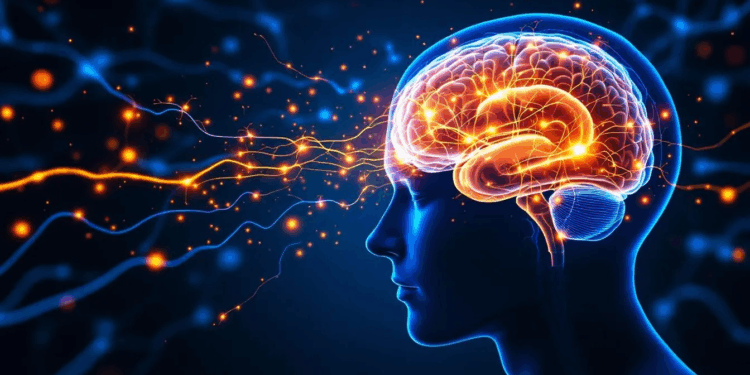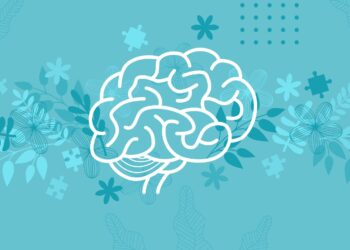In the age of smartphones, social media, and digital entertainment, it’s no coincidence that we find ourselves compulsively checking notifications or endlessly scrolling. Behind many of these seemingly harmless behaviors lies a powerful neurochemical mechanism: the dopamine reward system. This system is activated by rewarding stimuli—such as likes, messages, or new content—which can elicit pleasure and motivate approach behaviors. Originally evolved to support survival and goal-directed behavior, this system is now central to understanding how technology captures—and keeps—our attention. Platforms like sixty6 exemplify how digital environments are designed to engage this very system.
This article examines the functioning of the dopamine reward system, how modern technology leverages it, its influence on reward-related behavior, and how we can regain control over our digital habits through mindfulness, awareness, and intention.
Understanding the Mesolimbic Dopamine System and Reward
Dopamine is often referred to as the brain’s “pleasure chemical,” but its role is much more nuanced. Dopaminergic neurons play a central role in the reward system by transmitting signals that encode the motivational and reinforcing properties of rewarding stimuli. Rather than producing pleasure itself, dopamine functions as a motivator. It’s part of a complex reward circuitry that signals when something is worth pursuing—whether it’s food, social interaction, or a satisfying task, with dopamine release facilitating reward learning and reinforcing adaptive behaviors.
This system involves several brain structures, including the ventral tegmental area (VTA) and the nucleus accumbens, which work together to reinforce behavior by associating it with a sense of reward. The prefrontal cortex and anterior cingulate cortex are also key regions involved in reward related cognition and reward processing, helping to evaluate outcomes and regulate decision-making based on reward value and motivational value. The mesolimbic dopamine pathway, connecting the VTA to the nucleus accumbens and other limbic structures, is crucial for mediating reward value, motivational value, and reinforcement learning.
This evolutionary trait helped humans prioritize actions that enhance survival and reproduction.
However, in today’s digital landscape, these same circuits are stimulated not by life-or-death tasks but by pings, likes, streaks, and push notifications.
Technology’s Role in Triggering Dopamine Release Loops
What makes technology so engaging—and, in many cases, addicting—is its mastery of intermittent reinforcement. Instead of offering consistent rewards, apps and platforms use variable reward schedules—a technique drawn from behavioral psychology. Like a slot machine, you never know when the next notification or like will arrive, which keeps you engaged longer and returning more frequently.
Every swipe on a dating app, every scroll through a feed, and every tap on a mobile game can release a small spike of dopamine. These actions can alter dopamine levels and modulate dopamine signaling in the brain, influencing how we respond to digital stimuli. These micro-rewards reinforce the action, making it more likely that we’ll repeat it, often unconsciously. In response to these digital cues, dopamine neurons in the brain’s reward pathways are activated and release dopamine, further strengthening the association between the behavior and the reward. Over time, this creates dopamine loops, where behavior is continually reinforced by unpredictable positive feedback. These dopamine loops drive reward responses and promote reward related behaviors, making it difficult to disengage from the technology.
This technique is so effective that entire industries—from mobile gaming to social networking—design their platforms around these feedback loops.
Feedback Loops and Habit Reinforcement
Let’s break down how a dopamine loop forms in the digital context:
- Cue: You receive a push notification.
- Craving: Your brain anticipates a reward (message, like, or alert). At this stage, your brain evaluates the expected reward, with the ventral striatum and dorsal striatum playing key roles in processing this anticipation.
- Response: You open the app to see what it is.
- Reward: Dopamine is released if the content is positive or engaging.
This basic structure is the foundation of habit formation, and it can quickly spiral into compulsive behavior. The basal ganglia, including striatal neurons within the ventral and dorsal striatum, along with other brain regions, are deeply involved in decision making and reinforcing these habits. Apps are specifically designed to optimize the timing and appearance of these cues to create habit loops.
Infinite scroll, autoplay videos, “likes,” and even colored badges are all designed to manipulate your attention by stimulating your brain’s reward system in fast, frequent cycles.
Neurological Costs: Prefrontal Cortex Fatigue, Anxiety, and Distraction
While short-term dopamine spikes may provide momentary pleasure, chronic exposure to digital stimuli can lead to dopamine desensitization. This means the brain becomes less sensitive to normal levels of dopamine, requiring more stimulation to achieve the same effect—a dynamic seen in addiction. Addictive substances and addictive drugs can cause unnaturally high dopamine surges, which overstimulate the brain’s reward system and may lead to compulsive drug use.
This overstimulation contributes to:
- Reduced attention span
- Mental fatigue
- Restlessness and irritability
- Increased baseline anxiety
Dopamine receptors, dopamine production, and brain dopamine all play key roles in these processes, as repeated overstimulation can reduce dopamine production and alter the sensitivity of dopamine receptors, further impairing the brain’s reward pathways.
In some cases, overuse of digital technology may mimic the symptoms of behavioral addictions, with users experiencing withdrawal-like symptoms when separated from their devices. The dopamine reward system, when consistently hijacked by technology, begins to recalibrate what we find rewarding or meaningful. Chronic digital overstimulation can also contribute to depressive behaviors and mimic the effects of chronic mild stress on the central nervous system and brain function.
Mindful Technology Use and Dopamine Regulation
The good news is that awareness is the first step toward change. By understanding how the dopamine reward system operates in digital environments, we can adopt strategies to minimize its exploitative effects. It is also important to recognize the role of natural rewards and motivational salience in maintaining healthy reward systems, as these help support balanced motivation and well-being.
Retraining the brain to respond to rewarding stimulus and engage in reward learning can help restore balance before digital habits become entrenched.
1. Dopamine Fasting
This practice involves intentionally abstaining from high-stimulation activities (social media, gaming, junk food) to reset your brain’s dopamine sensitivity, which may help regulate dopamine levels, support healthy dopamine systems, and modulate dopamine signaling involved in reward processing and motivation. While not scientifically validated in all its claims, anecdotal evidence suggests it can reduce compulsive digital behaviors.
2. Mindfulness and Breathwork
Practices that center attention—such as meditation and controlled breathing—can help disrupt compulsive dopamine loops. Mindfulness and breathwork may influence intrinsic excitability and synaptic plasticity in the brain, supporting adaptive changes in neural circuits involved in stress, reward, and behavioral regulation. They encourage a slower, more intentional engagement with technology.
3. Scheduled Tech Use
Setting specific time blocks for digital consumption prevents the kind of impulsive engagement that leads to overuse. Managing environmental cues and environmental stimuli—such as disabling notifications or changing your surroundings—can further reduce digital overuse by limiting external triggers that activate the urge to engage with devices. Turning off notifications and using grayscale modes can also minimize cues.
4. Prioritizing Deep Work and Flow
Engaging in longer, uninterrupted periods of meaningful activity—whether it’s writing, music, or sports, or natural rewards such as monetary rewards, sexual behavior, and social interactions—can trigger flow states that offer sustainable dopamine rewards without the crash.
Parallels with Psychedelic Research
Interestingly, psychedelic research also intersects with the dopamine reward system, though in fundamentally different ways. Substances like psilocybin don’t flood the brain with dopamine in the same way addictive stimuli do. Instead, they temporarily shift brain network activity, potentially resetting dysfunctional reward pathways. The effects of psychedelics are thought to involve the medial prefrontal cortex, VTA dopamine neurons, mesolimbic dopamine, and the mesolimbic dopamine system, all of which play key roles in reward processing, motivation, and emotional regulation.
Emerging studies suggest psychedelics can help treat disorders related to the dopamine system, including:
- Depression
- Obsessive-compulsive disorder
- Addiction
- Bipolar disorder
- Attention deficit hyperactivity disorder
Unlike the fast, repetitive stimulation of digital tech, psychedelic experiences tend to encourage reflection, integration, and long-term changes in perception. In essence, where social platforms trigger loops, psychedelics may help break them.
Future Implications: Designing Ethical Technology
As public awareness grows, so too does the responsibility of developers and tech companies to design ethically. Some have begun incorporating wellness features—like screen time limits and focus modes—but these are often superficial add-ons to fundamentally addictive systems.
To create a healthier digital environment, we must:
- Promote transparent design that informs users of reward mechanics
- Encourage value-driven platforms that prioritize education, therapy, or creativity
- Explore the integration of neuroscience and ethics into UX design
There’s also an opportunity to reverse-engineer the dopamine reward system for good—using gamification and behavioral reinforcement to encourage meditation, exercise, learning, and healthy habit formation. In this context, understanding the roles of the orbitofrontal cortex and nucleus accumbens shell in mediating pleasure and reward value, as well as how motivational salience drives approach behaviors, can help guide technology design that supports healthy motivation and positive reward experiences.
From Hijack to Harmony
The dopamine reward system is a core feature of human neurobiology, one that has helped our species survive and thrive. The brain’s reward pathways, including the brain’s reward system and dopaminergic pathways, play a central role in mediating motivation, pleasure, and reinforcement of behaviors. But in the hands of modern technology, it has become a powerful tool of manipulation.
By understanding how these loops work—and how they’re reinforced—we can appreciate the critical role of neurotransmitter dopamine in reward related neural activity, reward related behaviors, and reward processing. This knowledge helps us begin to unwind compulsive digital behaviors and design better tools, habits, and systems that work with our brain rather than against it.
In a world of overstimulation, mindful tech use isn’t just a preference—it’s a form of self-care and neurological hygiene. Scientific research into the neural correlates of digital engagement and the impact of rewarding stimulus on our brains further underscores the need to rethink our relationship with technology. And just as psychedelic medicine seeks to restore balance to the brain, so too must we restore balance to our attention, motivation, and well-being.














Discussion about this post